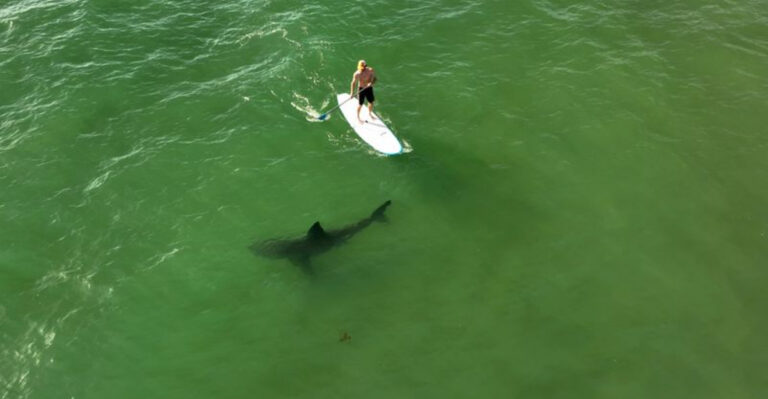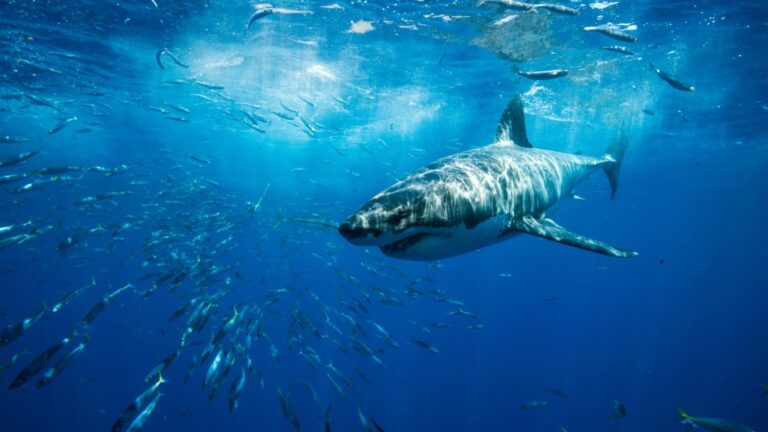14 Extinct Animals That People Keep Claiming To See In American Wilderness
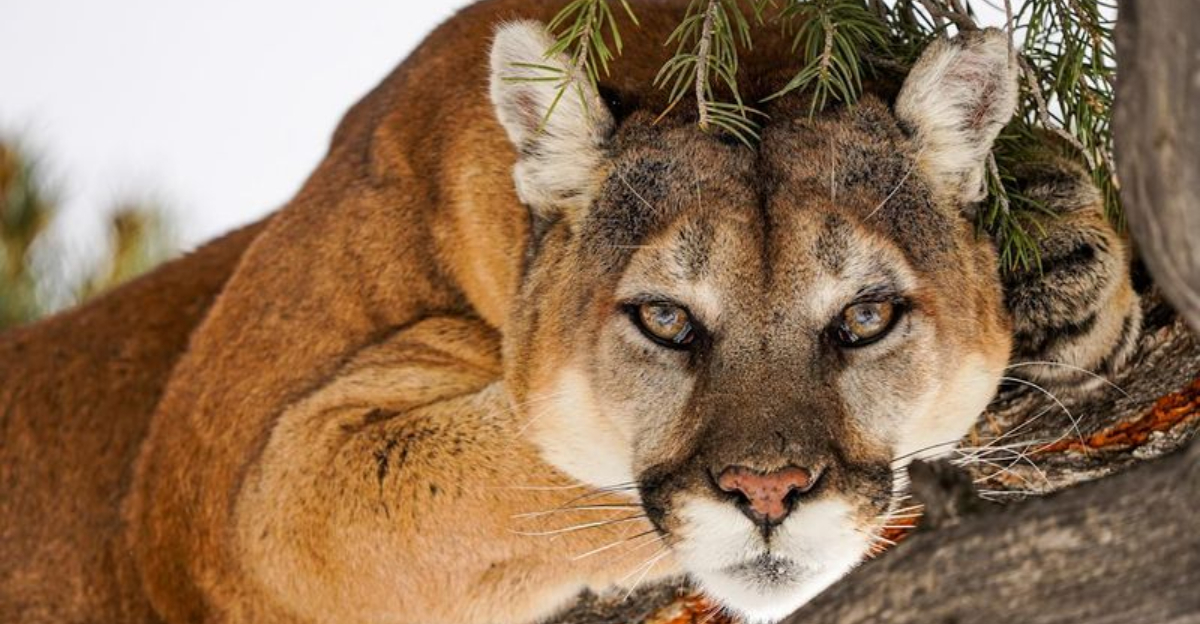
The American wilderness holds many secrets, including reported sightings of animals science says no longer exist.
From dense forests to remote mountains, eyewitness accounts continue to emerge of creatures that officially disappeared long ago.
These mysterious encounters fuel debates between skeptics and believers, while raising fascinating questions about what might still lurk in the unexplored corners of our continent.
1. Woolly Mammoths In Alaska

Native Alaskans occasionally report massive, shaggy elephant-like beasts trudging through snowstorms in remote areas. These sightings typically occur during blizzards or in twilight conditions when visibility is poor.
Scientists officially declare woolly mammoths extinct for over 4,000 years, yet the frozen north might preserve secrets. Some theorize isolated populations could have survived longer than we thought in particularly remote regions.
2. Sabertooth Cats In The Rocky Mountains

Mountain hikers occasionally describe encounters with oversized feline predators bearing distinctive elongated fangs. Rangers dismiss these as misidentified mountain lions, but witnesses insist what they saw was much larger and structurally different.
Paleontologists date the last saber-toothed cats to roughly 10,000 years ago. The remote, rugged landscape of the Rockies provides countless hiding places where small populations could theoretically evade scientific detection for centuries.
3. Giant Ground Sloths In Appalachia
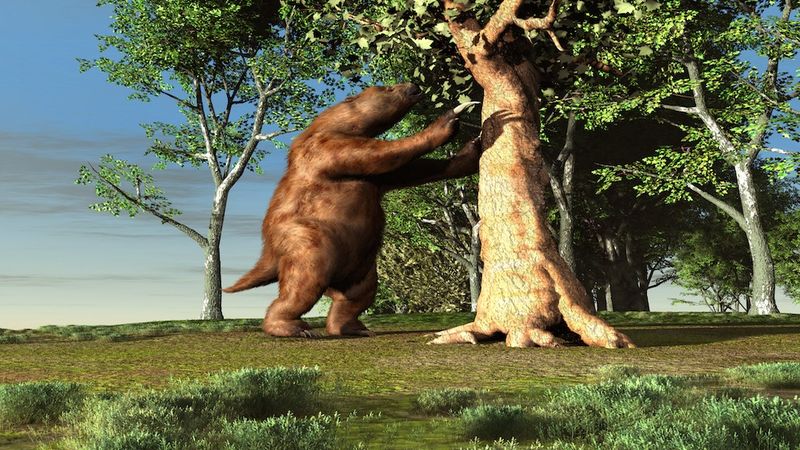
Farmers near Appalachian forests report massive, slow-moving creatures with shaggy brown fur standing upright at forest edges. Witnesses describe them as bear-like but much taller, with unusual proportions and elongated front limbs.
Giant ground sloths supposedly vanished around 10,000 years ago. Folk traditions in several Appalachian communities include tales of “tree bears” that match descriptions of these prehistoric mammals remarkably well.
4. Short-Faced Bears In Pacific Northwest

Loggers and backpackers occasionally report bears of impossible size with unusually proportioned faces. Standing nearly 12 feet tall on hind legs, these creatures dwarf modern grizzlies.
The Arctodus simus, or short-faced bear, supposedly went extinct 11,000 years ago. However, the vast wilderness of the Pacific Northwest contains countless unexplored valleys and remote areas where relict populations might persist without human contact.
5. American Cheetahs In Southwestern Deserts
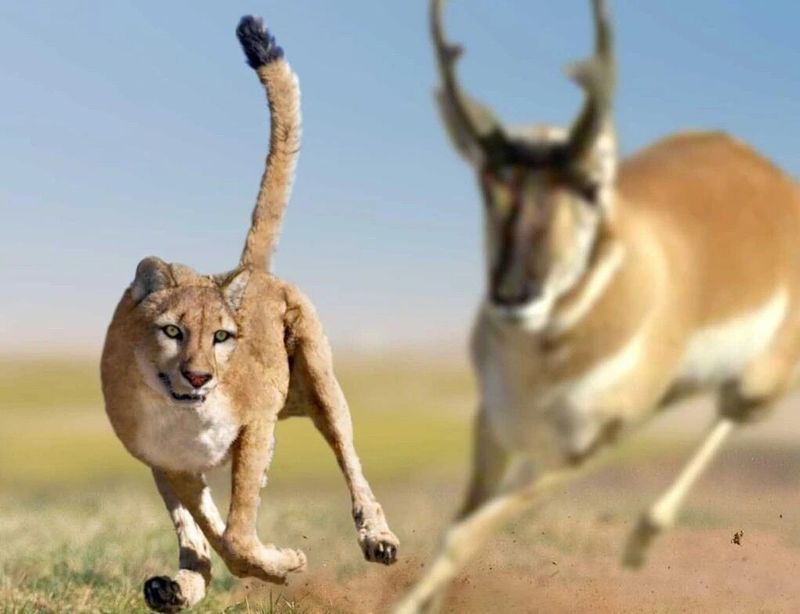
Ranchers in Arizona and New Mexico occasionally glimpse impossibly fast feline predators racing across open desert. Unlike mountain lions, these cats have slender builds and distinctive running styles.
The American cheetah (Miracinonyx) vanished around 12,000 years ago according to fossil records. Desert regions offer vast territories with minimal human presence, potentially allowing small populations to survive undetected by feeding on pronghorn antelope, their ancient prey.
6. Dire Wolves In Northern Minnesota
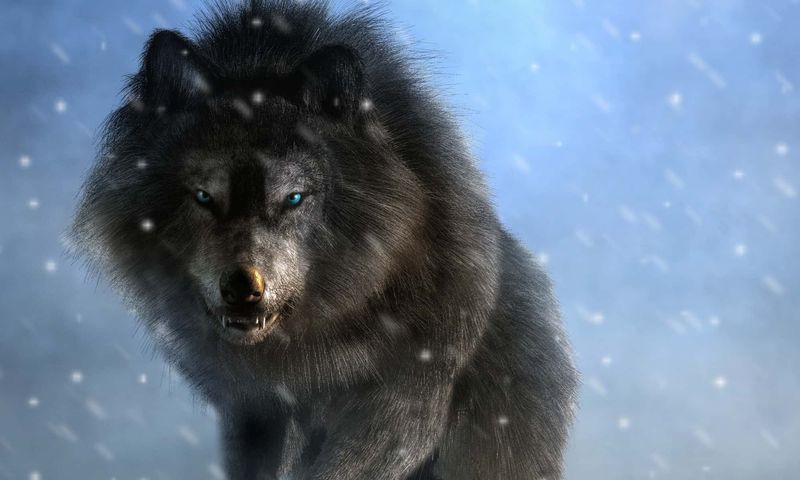
Hunters in Minnesota’s northern forests report wolf encounters with animals far larger than typical gray wolves. These massive canids appear heavier-built with broader skulls and different proportions.
Officially, dire wolves went extinct approximately 9,500 years ago. Minnesota’s border region contains some of America’s most remote wilderness. Wolf experts acknowledge significant size variations exist among modern wolves, potentially explaining these sightings.
7. Giant Beavers In Great Lakes Region

Fishermen report enormous beaver-like creatures building unusually large dams in remote waterways around the Great Lakes. These animals reportedly reach sizes comparable to black bears, dwarfing modern beavers.
Castoroides, the giant beaver, officially disappeared around 10,000 years ago. The interconnected waterways of the Great Lakes region offer countless remote habitats where relict populations might persist, constructing the massive dams occasionally discovered in wilderness areas.
8. American Lions In Texas Hill Country
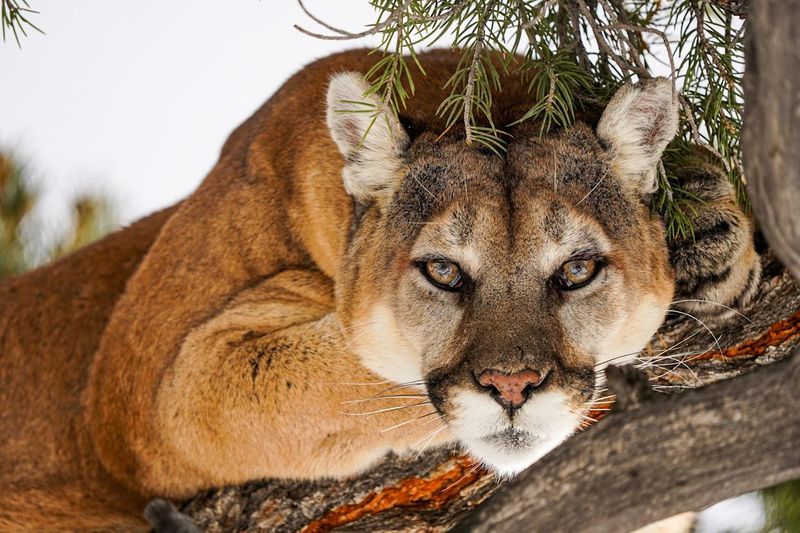
Ranchers occasionally report encountering lion-like predators significantly larger than mountain lions. These massive cats reportedly stand taller at the shoulder with distinctive manes and different hunting behaviors.
The American lion (Panthera atrox) supposedly vanished around 11,000 years ago. Texas’s vast ranchlands and wilderness areas contain countless remote canyons and caves where small populations might persist, feeding primarily on wild boar and deer.
9. Stag-Moose In Northern Maine Forests
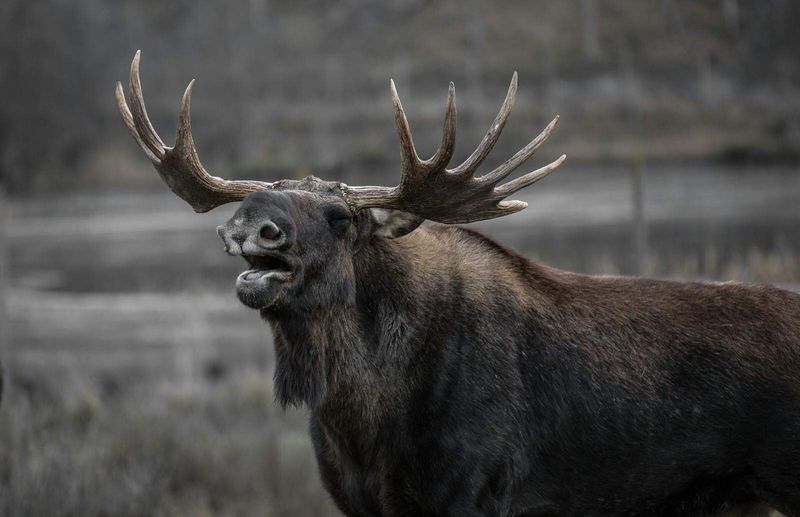
Woodsmen in Maine’s North Woods occasionally encounter moose-like animals with unusually configured antlers and different proportions than typical moose. These creatures reportedly possess elements of both deer and moose appearances.
Cervalces scotti, the stag-moose, supposedly disappeared around 11,500 years ago. Maine’s extensive wilderness bordering Canada provides vast habitat where small populations might survive, particularly in boggy areas rarely visited by humans.
10. Glyptodonts In New Mexico Badlands
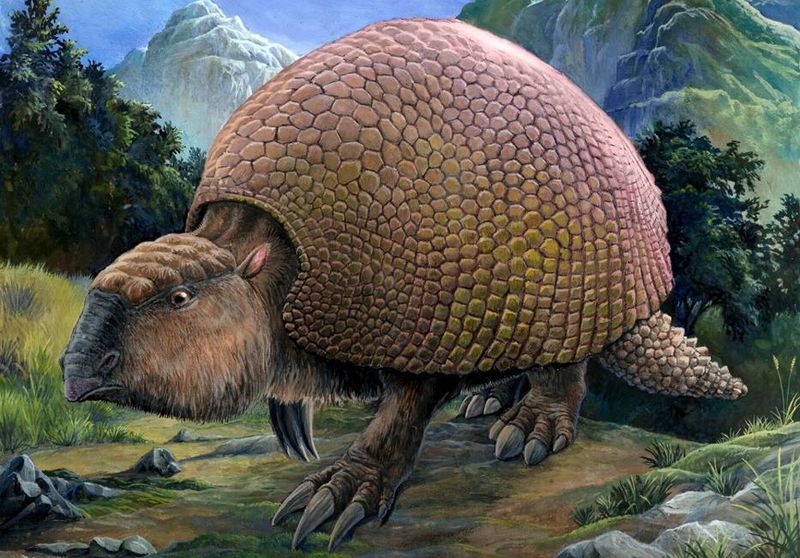
Hikers occasionally report armadillo-like creatures of impossible size in remote canyons. Unlike modern armadillos, these animals reportedly reach the size of small cars with distinctive domed shells.
Glyptodonts officially went extinct around 10,000 years ago. New Mexico’s isolated badlands contain countless unexplored canyons and caves. Native American petroglyphs in the region include images resembling these ancient armored mammals.
11. American Camels In Nevada Desert
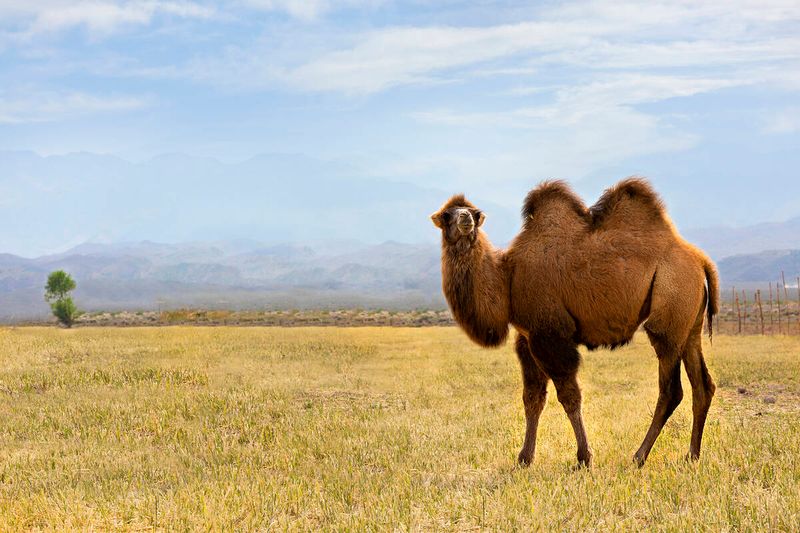
Travelers through Nevada’s remote desert regions occasionally report encounters with wild camel-like creatures. Unlike escaped domestic camels, these animals reportedly show distinctive features of native American camelids.
Camelops, the American camel, supposedly disappeared around 10,000 years ago. Nevada’s vast desert wilderness contains some of America’s least explored territories. Wild horses survive there in remote areas, suggesting other large mammals might potentially do the same.
12. Giant Bison In Yellowstone’s Remote Corners
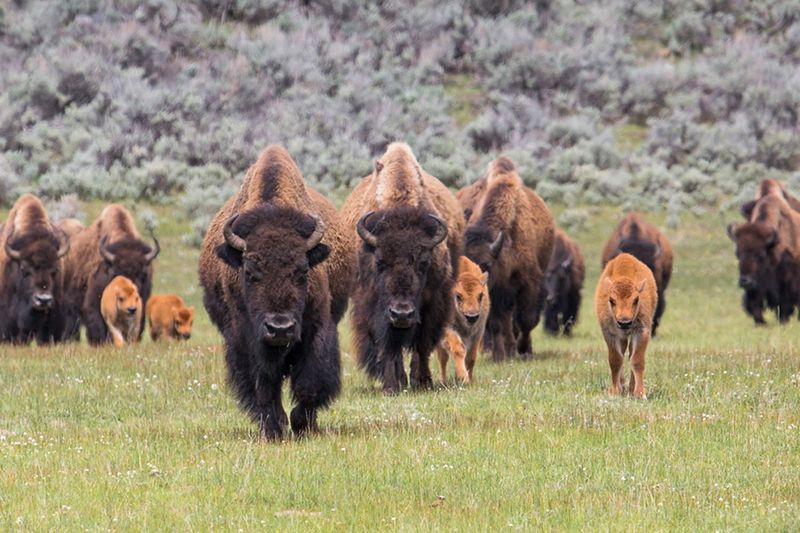
Park rangers occasionally receive reports of bison significantly larger than modern specimens in Yellowstone’s most remote areas. These massive bovines reportedly stand taller at the shoulder with different horn configurations.
Bison latifrons, the giant ice age bison, supposedly disappeared around 20,000 years ago. Yellowstone’s geothermal features create unique microclimates and isolated valleys where relict populations might theoretically survive, particularly in areas rarely accessed by tourists.
13. Dwarf Mammoths On Channel Islands
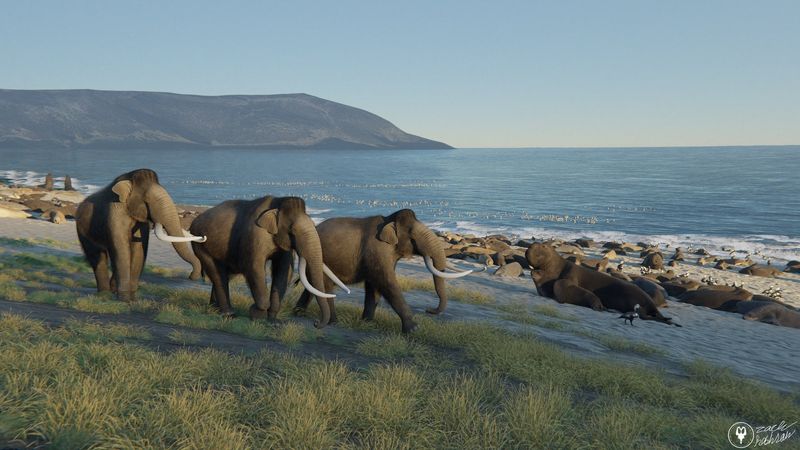
Boaters near California’s Channel Islands occasionally report glimpsing elephant-like creatures much smaller than modern elephants. These sightings typically occur in foggy conditions near the more remote islands.
Pygmy mammoths officially went extinct around 13,000 years ago. The Channel Islands’ isolation and unique ecosystems have preserved many endemic species. Thick fog regularly shrouds these islands, creating conditions where misidentifications could occur.
14. American Mastodons In Ohio Valley

Farmers occasionally report massive elephant-like creatures with distinctive tusks and body shapes different from modern elephants. These sightings typically occur near swampy areas and ancient salt licks.
Mastodons officially disappeared around 10,000 years ago. The Ohio Valley contains numerous ancient salt licks where these creatures once gathered. Native American oral traditions include detailed descriptions of hunting these animals that persisted long after their supposed extinction.

